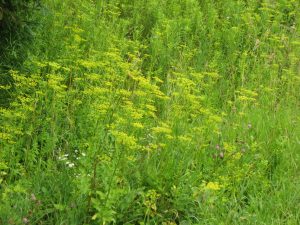By Vijai Pandian
July is the prime time to keep up with your garden maintenance. Beyond weeding and mulching, there are other essential chores that can help your landscape and garden plants to stay healthy and fresh.

- Schedule your second lawn fertilization with 1 lb. of nitrogen per 1000 sq. ft. around the first week of July. For grasses in shaded areas, use ½ lb. of nitrogen per 1000 sq. ft. Irrigate your lawn lightly after scheduling your fertilization.
- Prune tomato suckers and train the vine to increase air flow movement around the plant. Tomato suckers are the short shoots that arise on the leaf axil. On three feet row spacing, leave the bottom two suckers and the main stems of the tomato to develop. Any other suckers are pruned on a continuous basis about once a week.
- Schedule a preventive fungicide application using chlorothalonil or copper based products labeled for vegetable use to protect your tomatoes from early blight and septoria leaf spot disease. These two diseases cause severe defoliation on the lower leaves and could collapse the entire plant if unchecked at an early stage.
- Invasive wild parsnip is in bloom, so be cautious when mowing along the roadsides and ditches. The poisonous sap of wild parsnip can cause significant blisters and rashes on exposed skin under sunlight. When working in an infested area, always wear rubber gloves, goggles, long sleeve shirt, pants, and boots. It’s wise to work after sunset to minimize the risk of getting your skin exposed to sunlight.
- It is high time to prune spring flowering shrubs like lilac, forsythia, weigela, viburnums, fothergillas, fringetree, flowering quinces, snowberry, Japanese kerria, daphne, deutzia. Pruning at this time of the year will not affect the flower bud development for next season, however, don’t wait till mid-July to prune the spring flowering shrubs.
- Many ash trees in the Southeast Wisconsin region have been hard hit with Emerald ash borer and are showing signs of dead limbs, crack bark and dead trees. Call a certified arborist to prune dead ash trees and branches. Prompt pruning of the dead limbs and trees can minimize the storm damage risk. You can find a list of certified arborists at the International Society of Arboriculture website.




